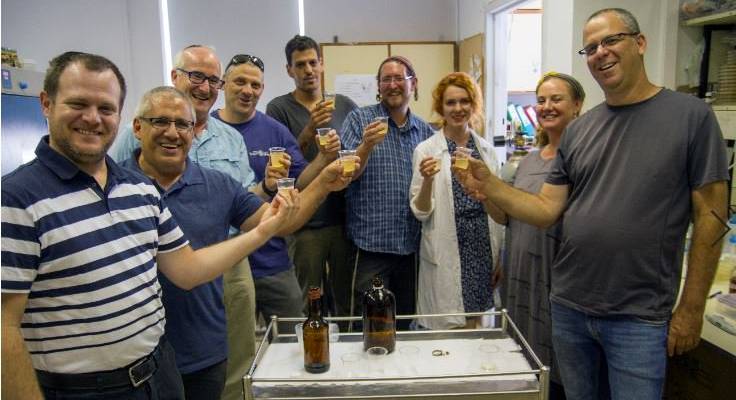What kind of beer did Pharaoh drink? Israeli scientists resurrect yeast from ancient beer jugs to recreate 5,000-year-old brew.
What kind of beer did Pharaoh drink?
In ancient times, beer was an important ingredient in the daily diet. Great powers were attributed to beer in the ancient world, particularly for religious worship and healing properties.
The pottery used to produce beer in antiquity served as the basis for new research led by Dr. Ronen Hazan and Dr. Michael Klutstein, microbiologists from the School of Dental Medicine at the Hebrew University of Jerusalem (HUJI), and Dr. Yitzhak Paz from the Israel Antiquities Authority.
The team examined the colonies of yeast that formed and settled in the pottery’s nano-pores. Ultimately, they were able to use resurrect this yeast to create a high-quality beer – one that’s approximately 5,000 years old.
Many cooks were invited into the ‘beer kitchen” to isolate the yeast specimens from the ancient debris and to create a beer with it. First the scientists reached out to vintners at Kadma Winery, which still produces wine in clay vessels, proving that yeast may be safely removed from pottery even if it had remained dormant in the sun for years.

Beer jug from Tel Tzafit/Gath archaeological digs, from which Philistine beer was produced. (Yaniv Berman, IAA)
The yeast was then photographed by Dr. Tziona Ben-Gedalya at the Judaea Region Research and Development Center. Following her initial examination, the team reached out to archaeologists Dr. Paz, Professor Aren Maeir of Bar-Ilan University and Professors Yuval Gadot and Oded Lipschits of Tel Aviv University.
The archaeologists provided shards of pottery that had been used as beer and mead (honey wine) jugs back in ancient times, which miraculously still had yeast specimens stuck inside. These jars date back to the reign of Egyptian Pharaoh Narmer (roughly 3000 BCE), Aramean King Hazael (800 BCE) and the Hebrew prophet Nehemiah (400 BCE) who, according to the bible, governed Judea under Persian rule.
The researchers, with the help of HUJI student Tzemach Aouizerat, cleaned and sequenced the full genome of each yeast specimen and turned them over to Dr. Amir Szitenberg at the Dead Sea-Arava Science Center for analysis. Szitenberg found that these 5,000-year yeast cultures are similar to those used in traditional African brews, such as the Ethiopian honey wine tej, and to modern beer yeast.
Research Important for Reconstructing the Past
Local Israeli beer expert Itai Gutman helped the scientists make the beer, and the brew was sampled by Ariel University’s Dr. Elyashiv Drori as well as by certified tasters from the International Beer Judge Certification Program (BJCP), under the direction of brewer and Biratenu owner Shmuel Nakai. The testers gave the beer a thumbs up, deeming it high-quality and safe for consumption.
“The greatest wonder here is that the yeast colonies survived within the vessel for thousands of years—just waiting to be excavated and grown. This ancient yeast allowed us to create beer that lets us know what ancient Philistine and Egyptian beer tasted like,” said Dr. Hazan.
“By the way, the beer isn’t bad,” he added. “Aside from the gimmick of drinking beer from the time of King Pharaoh, this research is extremely important to the field of experimental archaeology—a field that seeks to reconstruct the past. Our research offers new tools to examine ancient methods and enables us to taste the flavors of the past.”
‘This Has Never Been Done Before’
According to Paz, “We are talking about a real breakthrough here. This is the first time we succeeded in producing ancient alcohol from ancient yeast. In other words, from the original substances from which alcohol was produced. This has never been done before.”
“We dug at Ramat Rachel, the largest Persian site in the Judaean kingdom, and found a large concentration of jugs with the letters J, H, D – Yahud – written on them. In a royal site like Ramat Rachel it makes sense that alcohol would be consumed at the home of the Persian governor,” said Prof. Gadot.
“These findings paint a portrait that supports the biblical image of drunken Philistines,” noted Prof. Maeir.










